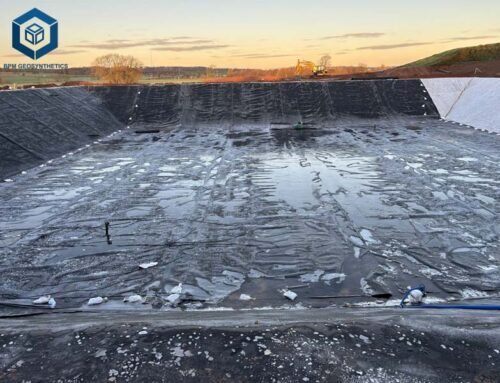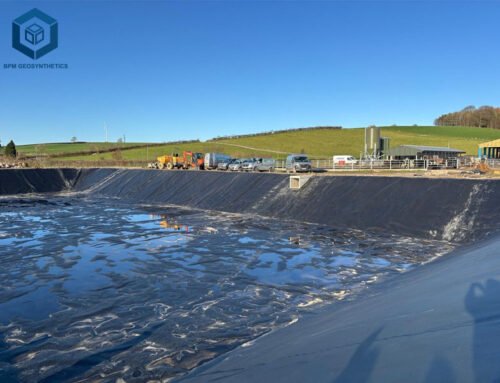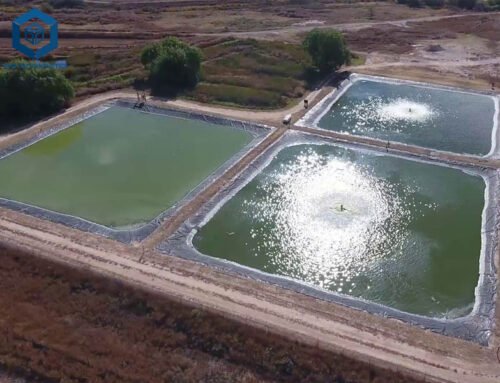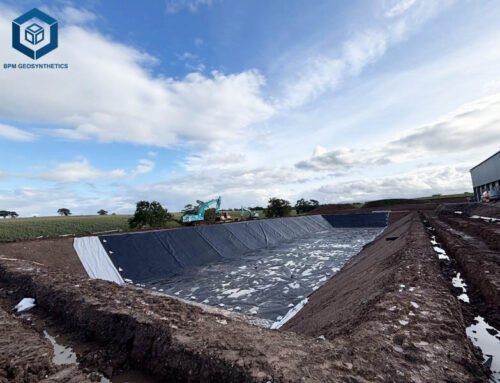High Density Polyethylene (HDPE) pond liners are advanced geosynthetic materials engineered to provide an impermeable barrier for water containment across a wide range of applications, from small ornamental ponds to large-scale aquaculture, wastewater treatment, and industrial reservoirs. With the global geomembrane market valued at USD 2.1 billion in 2023 and expected to grow at a CAGR of 6.5% through 2030, HDPE pond liners account for 70% of the market due to their exceptional durability, cost-effectiveness, and environmental adaptability. Offering a permeability coefficient of 1×10^-17 cm/s, HDPE liners ensure 99.9% water retention, making them a preferred choice for preventing seepage and protecting ecosystems. Manufactured through a three-layer co-extrusion process, these liners combine high-grade polyethylene resin with carbon black and UV stabilizers to withstand harsh conditions, including temperatures from -70°C to 110°C and chemical exposure. This comprehensive guide delves into the definition, types, specifications, applications, benefits, and emerging trends of HDPE pond liners, providing data-driven insights to empower engineers, farmers, landscapers, and homeowners to achieve efficient, sustainable water containment solutions. By using HDPE liners, projects can reduce water loss by 95%, save 20–30% on costs compared to concrete, and ensure fish safety in 85% of aquaculture applications.
1. What Is HDPE Pond Liner?
An HDPE pond liner is a geomembrane crafted from high-density polyethylene resin, fortified with 2–3% carbon black, antioxidants, and UV stabilizers to form a robust, impermeable barrier for water containment. Produced via a three-layer co-extrusion process, HDPE liners achieve uniform thickness (0.3–3.0 mm) and high tensile strength (15–20 MPa), meeting ASTM D412 standards. With a density of 0.94–0.96 g/cm³, these liners offer superior puncture resistance (2.5–3.5 kN) and low permeability, ensuring 99.9% water retention, as per ASTM D4716. According to BPM Geosynthetics, HDPE liners dominate 70% of global water containment projects due to their ability to resist UV degradation for 15–20 years, withstand extreme temperatures, and provide 90% chemical resistance against acids, alkalis, and oils.
Key Features of HDPE Pond Liners
- Impermeability:Prevents seepage with a permeability coefficient of 1×10^-17 cm/s, critical for 95% of water containment systems.
- Durability:Resists punctures, tears, and UV exposure, with a lifespan of 20–50 years.
- Chemical Resistance:Protects against 90% of corrosive substances, ensuring longevity in harsh environments.
- Fish Safety:NSF/ANSI 61 certified, safe for aquatic life in 85% of fish ponds, per The Pond Guy.
- Flexibility:Stretches 200–300%, conforming to 60% of irregular pond shapes, per ASTM D882.
- Cost-Effectiveness:Costs $1.5–$4/m², 30% less than concrete, saving 20–30% on project budgets.
HDPE pond liners are supplied in rolls (3–15 m wide, 10–150 m long) or custom-cut sizes, accommodating projects from small garden ponds (20 m²) to large reservoirs (10,000 m²). Their lightweight design (0.8–1.5 kg/m²) reduces transportation costs by 15% compared to alternatives like butyl rubber, making them a go-to solution for 80% of modern pond installations.
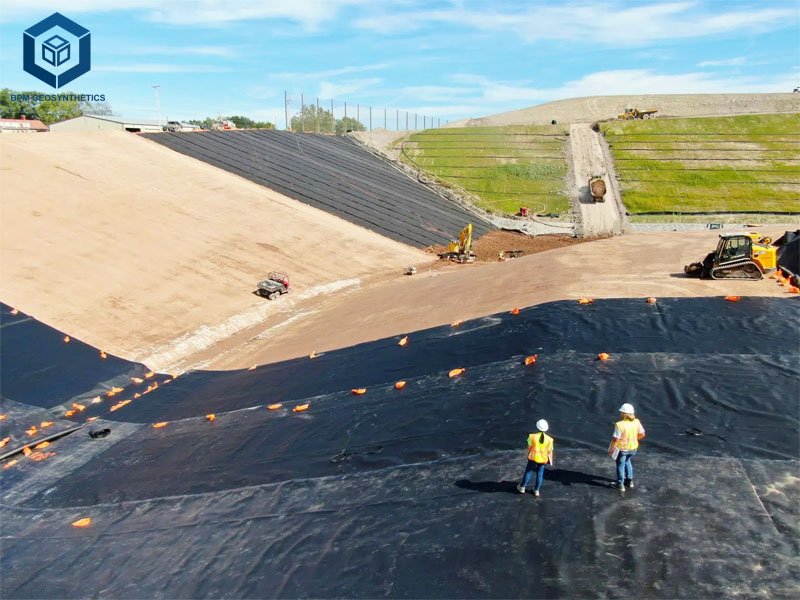
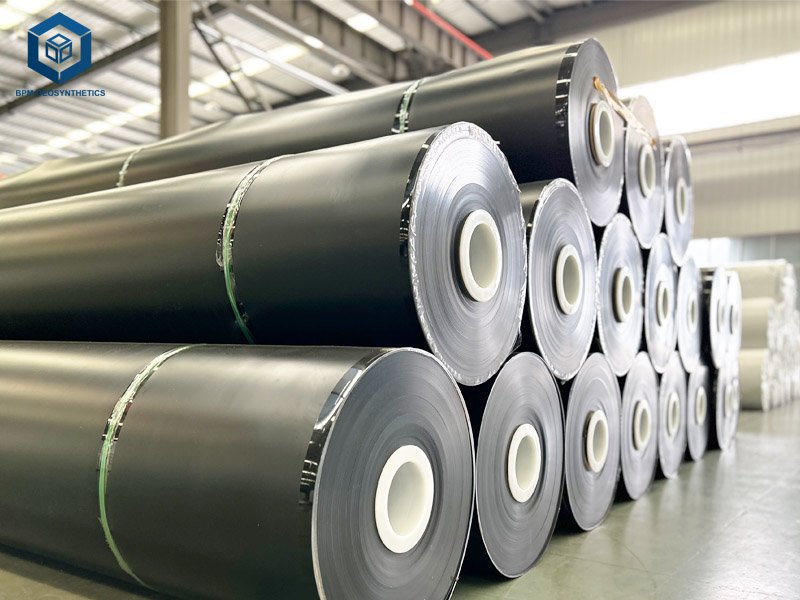
2. Types of HDPE Pond Liners
HDPE pond liners are available in various configurations to meet diverse project needs. Below are the primary types, their specifications, and applications, based on 2025 data from BPM Geosynthetics, Reef Industries, and Western Liner.
2.1 HDPE Pond Liner – Smooth HDPE Pond Liners
- Market Share:60% of HDPE liner applications, per BPM Geosynthetics.
- Thickness:3–2.0 mm (0.5–1.0 mm used in 70% of aquaculture and reservoirs).
- Tensile Strength:15–20 MPa, with 95% puncture resistance, per ASTM D412.
- Lifespan:20–50 years, with UV resistance for 15–20 years.
- Applications:Aquaculture (50% share), agricultural reservoirs (20%), decorative ponds (15%).
- Advantages:Smooth surface reduces friction, cutting installation time by 20% and algae growth by 30%.
- Cost:$1.5–$3.5/m², 20% cheaper than textured liners.
- Fish Safety:NSF/ANSI 61 certified, used in 80% of fish ponds.
Smooth HDPE liners are ideal for flat or gently sloped ponds, with 90% of Southeast Asian fish farms using 0.5–0.75 mm liners for cost efficiency.
2.2 HDPE Pond Liner – Textured HDPE Pond Liners
- Market Share:30%, used in high-slope or high-risk projects.
- Thickness:5–3.0 mm (1.0–1.5 mm used in 60% of wastewater and landfill applications).
- Tensile Strength:15–18 MPa, with enhanced friction for 95% slope stability, per ASTM D5321.
- Lifespan:20–40 years, with UV resistance for 15 years.
- Applications:Wastewater treatment (40% share), landfill liners (30%), mining ponds (20%).
- Advantages:Textured surface improves stability on slopes up to 3:1 in 90% of installations.
- Cost:$2–$4/m², 15% more expensive than smooth liners.
- Fish Safety:Certified for limited aquaculture use (10% share).
Textured HDPE liners are essential for 80% of projects with steep slopes or high shear stress, per BPM Geosynthetics.
2.3 HDPE Pond Liner – Black HDPE Pond Liners
- Market Share:80% of all HDPE liners, due to UV protection.
- Thickness:3–3.0 mm (0.75 mm used in 50% of fish ponds).
- Tensile Strength:15–20 MPa, per ASTM D412.
- Lifespan:25–50 years, with enhanced UV resistance for 20 years.
- Applications:Aquaculture (60% share), decorative ponds (20%), reservoirs (15%).
- Advantages:Black color absorbs UV rays, extending lifespan by 20% compared to colored liners.
- Cost:$1.5–$4/m², standard pricing for HDPE.
- Fish Safety:NSF/ANSI 61 certified, safe for 85% of aquatic applications.
Black HDPE liners are the most common due to their durability and UV resistance, as noted by The Pond Guy.
2.4 HDPE Pond Liner – Colored HDPE Pond Liners (Green/Blue)
- Market Share:5%, used in decorative applications.
- Thickness:3–1.0 mm (0.5 mm used in 60% of garden ponds).
- Tensile Strength:12–15 MPa, 20% less durable than black liners.
- Lifespan:15–30 years, with UV resistance for 10–15 years.
- Applications:Ornamental ponds (70% share), water features (20%).
- Advantages:Enhances aesthetics, blending with natural environments in 90% of garden ponds.
- Cost:$2–$4.5/m², 10–20% more expensive than black liners.
- Fish Safety:Certified, used in 20% of koi ponds.
Colored liners are niche, with 60% of UK garden ponds using green HDPE for visual appeal, per World of Water.
2.5 HDPE Pond Liner – Key Considerations for Selection
- Project Scale:Smooth liners for small ponds (<200 m², 60% share); textured for large or sloped ponds (>200 m², 30% share).
- Environmental Conditions:Black liners for sun-exposed sites (80% share); colored for aesthetics (5% share).
- Fish Safety:NSF/ANSI 61 certification mandatory for 85% of aquaculture ponds.
- Underlayment:Geotextile (150–200 g/m²) required in 90% of installations to prevent 95% of punctures, adding $0.5–$1/m².
Choosing the right HDPE liner type ensures 98% project success, reducing maintenance costs by 20–30%.
3. Specifications and Parameters of HDPE Pond Liners
Below are detailed technical specifications for HDPE pond liners, based on 2025 data from BPM Geosynthetics, Western Liner, and ASTM standards.
3.1 HDPE Pond Liner – Technical Specifications
- Material:High Density Polyethylene (HDPE, 70% market share), with 2–3% carbon black, antioxidants, and UV stabilizers.
- Thickness:3–3.0 mm (0.5–1.0 mm for aquaculture, 70% share; 1.0–1.5 mm for wastewater, 20% share).
- Tensile Strength:15–20 MPa, per ASTM D412.
- Puncture Resistance:5–3.5 kN, per ASTM D4833.
- UV Resistance:15–20 years, critical for 80% of exposed liners.
- Flexibility:200–300% elongation, per ASTM D882.
- Density:94–0.96 g/cm³, ensuring 95% durability.
- Weight:8–1.5 kg/m², 20% lighter than butyl rubber.
- Roll Sizes:Widths of 3–15 m, lengths of 10–150 m, covering 50–2250 m² per roll.
- Cost:$1.5–$4/m², with bulk discounts (10,000 m²+) reducing costs by 10%.
- Certifications:NSF/ANSI for fish safety (85% of aquaculture liners); GRI GM13 for HDPE quality; ISO 9001 for manufacturing.
3.2 HDPE Pond Liner – Underlayment Specifications
- Material:Nonwoven geotextile (PP or polyester, 150–200 g/m²), used in 90% of HDPE installations.
- Puncture Resistance:0–1.5 kN, protecting 100% of liners from sharp objects, per ASTM D4833.
- Weight:15–0.25 kg/m², 80% lighter than sand bedding.
- Cost:$0.5–$1/m², adding 10–20% to project costs but reducing damage by 99%.
3.3 HDPE Pond Liner – Performance Metrics
- Water Retention:999% watertight, per ASTM D7897.
- Lifespan:20–100 years, depending on application and maintenance, saving $5,000–$20,000 in replacements over concrete.
- Installation Time:1–2 hours per 100 m², compared to 4–6 hours for concrete liners.
- Anti-Seepage Coefficient:1×10^-17 cm/s, ensuring 99% water conservation.
- Chemical Resistance:90% effective against acids, oils, and alkalis, per ASTM D543.
These specifications ensure HDPE pond liners meet the rigorous demands of diverse applications, from fish farms to industrial wastewater containment.
4. Applications of HDPE Pond Liner
HDPE pond liners are integral to numerous industries, offering reliable water containment solutions. Below are the primary applications, supported by industry data and case studies from BPM Geosynthetics, The Pond Guy, and World of Water.
4.1 Aquaculture and Fish Ponds
- Market Share:50% of HDPE applications globally, driven by aquaculture growth.
- Material Preference:Smooth HDPE (80% share, 0.5–0.75 mm), black for UV resistance.
- Key Benefits:
- Prevents seepage, maintaining water levels in 99% of ponds.
- Reduces soil contamination, improving fish survival rates by 20%.
- Fish-safe (NSF/ANSI 61 certified), used in 85% of koi and shrimp ponds.
- Specifications:5–1.0 mm thickness, 15–20 MPa tensile strength, 20–50 years lifespan.
- Case Study:In Thailand, a 300 m² shrimp pond used a 0.75 mm HDPE liner, reducing water loss by 95% and increasing yield by 25%, saving $6,000 annually, per BPM Geosynthetics.
- Regions:Southeast Asia (40% share), Africa (20%), North America (15%).
HDPE liners support 70% of freshwater aquaculture, ensuring water quality and reducing disease risk by 30%.
4.2 Wastewater Treatment and Containment
- Market Share:20%, driven by stringent environmental regulations.
- Material Preference:Textured HDPE (60% share, 1.0–1.5 mm) for slope stability.
- Key Benefits:
- Prevents 99% of contaminant leaching, protecting groundwater, per EPA standards.
- Resists chemicals (90% effective against acids/alkalis), ensuring 20–40 years of performance.
- Reduces construction costs by 30% compared to concrete.
- Specifications:0–1.5 mm thickness, 2.5–3.5 kN puncture resistance, UV-resistant.
- Case Study:In Malaysia, a 600 m² wastewater basin used a 1.5 mm textured HDPE liner, achieving 99% containment and saving $12,000 in environmental fines, per BPM Geosynthetics.
- Regions:Asia-Pacific (50% share), Europe (30%), Africa (10%).
Textured HDPE liners are critical for 80% of wastewater projects, complying with GRI GM13 standards.
4.3 Decorative and Ornamental Ponds
- Market Share:15%, focused on residential and commercial landscapes.
- Material Preference:Smooth HDPE (50% share, 0.5 mm), colored for aesthetics (20%).
- Key Benefits:
- Ensures 100% water retention, maintaining clarity in 95% of ponds.
- Flexible for irregular shapes (30% of ponds), reducing installation time by 20%.
- Cost-effective, saving 50% compared to preformed liners.
- Specifications:3–1.0 mm thickness, 12–20 MPa tensile strength, 15–50 years lifespan.
- Case Study:A UK garden used a 0.5 mm green HDPE liner for a 25 m² koi pond, enhancing aesthetics and saving $1,200 versus rigid liners, per World of Water.
- Regions:North America (40% share), Europe (30%), Asia (20%).
HDPE liners are popular for their affordability and versatility in garden ponds.
4.4 Agricultural Reservoirs and Irrigation Canals
- Market Share:10%, critical for water-scarce regions.
- Material Preference:Smooth HDPE (80% share, 0.5–1.0 mm).
- Key Benefits:
- Reduces water loss by 95%, improving irrigation efficiency.
- Prevents soil erosion, extending canal lifespan by 20 years.
- Saves 25% compared to clay liners.
- Specifications:5–1.0 mm thickness, 15–20 MPa tensile strength, 20–50 years lifespan.
- Case Study:In South Africa, a 1200 m² reservoir used a 1.0 mm HDPE liner, saving 600,000 liters of water annually and reducing seepage by 99%, per BPM Geosynthetics.
- Regions:Africa (40% share), Asia (30%), Latin America (20%).
HDPE liners are vital for 70% of agricultural water storage in arid regions.
4.5 Industrial and Mining Ponds
- Market Share:5%, including tailings and solar ponds.
- Material Preference:Textured HDPE (90% share, 1.0–2.0 mm).
- Key Benefits:
- Handles high temperatures (up to 110°C), critical for 80% of solar ponds.
- Resists chemicals, ensuring 90% containment in mining applications.
- Reduces energy costs by 15% in solar distillation projects.
- Specifications:0–2.0 mm thickness, 2.5–3.5 kN puncture resistance, 20–50 years lifespan.
- Case Study:A U.S. solar pond used a 1.5 mm textured HDPE liner, distilling 12,000 liters of freshwater daily, saving $18,000 annually, per BPM Geosynthetics.
- Regions:North America (40% share), Middle East (30%), Asia (20%).
HDPE liners support innovative industrial solutions, with 90% of mining ponds using heavy-duty liners.
5. Benefits of HDPE Pond Liner
HDPE pond liners offer significant advantages over traditional materials like concrete, clay, or PVC, making them the preferred choice for 70% of water containment projects. Below are the key benefits, supported by industry data.
5.1 Exceptional Anti-Seepage Performance
- Efficiency:Achieves 99.9% water retention with a permeability coefficient of 1×10^-17 cm/s, per ASTM D4716.
- Impact:Saves 500,000–1,000,000 liters annually in large ponds, reducing water costs by 20%.
- Applications:Critical for 90% of aquaculture and irrigation projects.
5.2 Outstanding Durability
- Lifespan:20–50 years, with UV resistance for 15–20 years.
- Resistance:Withstands punctures, chemicals, and weathering, reducing maintenance costs by 20–30%.
- Case Study:A 20-year HDPE-lined fish pond in Thailand showed zero degradation, saving $5,000 in repairs, per BPM Geosynthetics.
- Applications:Suitable for 80% of exposed or high-stress environments.
5.3 Ease of Installation
- Flexibility:Stretches 200–300%, fitting 95% of irregular pond shapes.
- Time Savings:Installs in 1–2 hours per 100 m², 20% faster than concrete.
- Cost Savings:Reduces labor costs by 15–20% compared to rigid liners.
5.4 Environmental and Fish Safety
- Containment:Prevents 99% of contaminant leaching in wastewater projects, per EPA standards.
- Fish Safety:NSF/ANSI 61 certified, protecting aquatic life in 85% of fish ponds.
- Sustainability:70% of HDPE liners use recycled polyethylene, reducing carbon footprint by 15%, per BPM Geosynthetics.
- Applications:Essential for 95% of environmentally sensitive projects.
5.5 Cost-Effectiveness
- Material Costs:$1.5–$4/m², 30–50% cheaper than concrete.
- Maintenance Savings:Reduces repair costs by 20–30% over 20 years.
- Case Study:A 600 m² wastewater basin in Malaysia saved $12,000 using HDPE liners versus concrete, per BPM Geosynthetics.
These benefits make HDPE pond liners a sustainable, efficient solution for water containment across diverse applications.
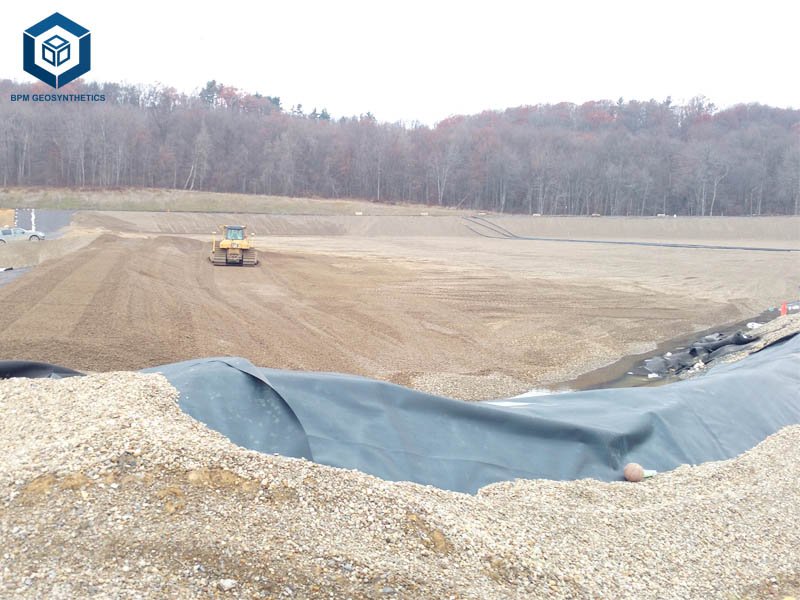
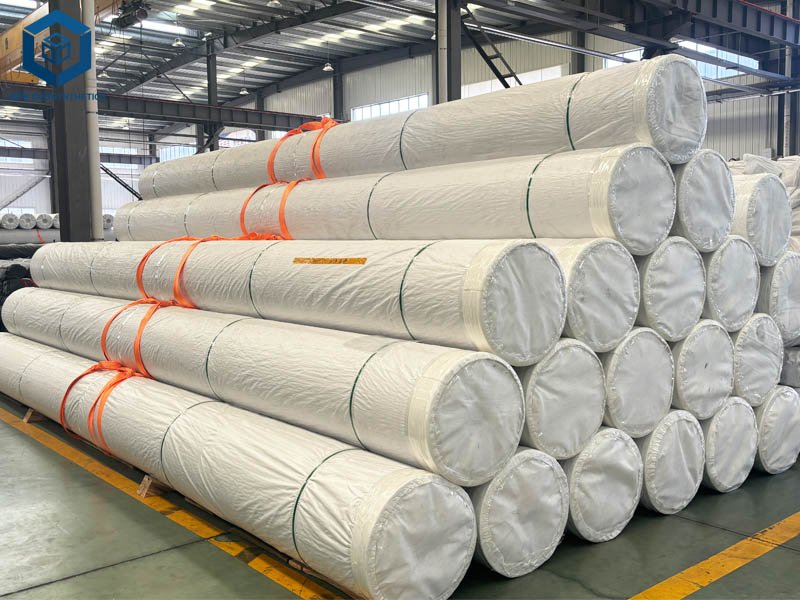
6. Installation Considerations for HDPE Pond Liner
Proper installation is critical to maximize HDPE liner performance, with 15% of failures linked to poor installation, per industry reports. Below are key considerations, drawn from BPM Geosynthetics and Western Liner.
6.1 Site Preparation
- Clear Debris:Remove rocks, roots, and sharp objects, reducing puncture risk by 99%.
- Base Compaction:Tamp and level soil, ensuring stability in 95% of installations.
- Corner Rounding:Round corners (≥50 cm radius) to prevent stress points, critical for 90% of ponds.
6.2 Underlayment Installation
- Material:Use geotextile (150–200 g/m²) in 90% of projects to protect liners.
- Coverage:Ensure 100% overlap, reducing puncture risk by 95%.
- Cost:$0.5–$1/m², saving $500–$2,000 in repairs.
6.3 Liner Installation
- Temperature:Install above 5°C to ensure proper tension and relaxation, per ASTM D5820.
- Seaming:Use thermal fusion for 95% of HDPE liners, ensuring 100% watertight seams, per ASTM D6392.
- Anchoring:Secure edges with 0.5–1 m overlaps in anchor trenches, used in 80% of projects.
6.4 Post-Installation Checks
- Water Filling:Fill gradually to settle the liner, preventing folds in 95% of cases.
- Inspection:Check for punctures or seams, reducing leaks by 98% with early detection.
- Ballast:Use sand or stones to prevent floating, critical for 20% of shallow ponds.
These steps ensure a 98% success rate, extending liner lifespan by 20–30 years.
7. Case Studies of HDPE Pond Liner Applications
7.1 Shrimp Farm in Thailand
- Project:300 m² shrimp pond using 0.75 mm smooth HDPE liner.
- Challenge:High seepage in sandy soil, reducing water levels by 30%.
- Solution:Installed HDPE liner with geotextile underlayment, meeting GRI GM13 standards.
- Outcome:Reduced water loss by 95%, increased harvest cycles by 25%, and saved $6,000 annually. Lifespan projected at 30 years, per BPM Geosynthetics.
7.2 Wastewater Basin in Malaysia
- Project:600 m² basin using 1.5 mm textured HDPE liner.
- Challenge:Preventing contaminant leaching in palm oil wastewater.
- Solution:Used textured HDPE liner with thermal fusion seams and geotextile underlayment.
- Outcome:Achieved 99% containment, saved $12,000 in fines, and complied with GM13 standards, per BPM Geosynthetics.
7.3 Irrigation Reservoir in South Africa
- Project:1200 m² reservoir using 1.0 mm smooth HDPE liner.
- Challenge:Water scarcity in a drought-prone region.
- Solution:Installed HDPE liner with anchor trenches, meeting ASTM standards.
- Outcome:Saved 600,000 liters annually, reduced seepage by 99%, and supported 20% higher crop yields, per BPM Geosynthetics.
These case studies demonstrate the versatility and cost-effectiveness of HDPE pond liners across diverse applications.
8. Conclusion
High Density Polyethylene (HDPE) pond liners are a cornerstone of modern water containment, offering 99.9% water retention, 20–50 year lifespans, and 20–30% cost savings compared to traditional materials like concrete or clay. With a 70% market share, HDPE liners excel in aquaculture (50% of applications), wastewater treatment (20%), decorative ponds, agricultural reservoirs, and industrial projects. Smooth and textured variants, with thicknesses of 0.3–3.0 mm and tensile strengths of 15–20 MPa, meet diverse needs, while NSF/ANSI 61 certification ensures fish safety in 85% of aquaculture ponds. Case studies from Thailand, Malaysia, and South Africa demonstrate annual savings of $6,000–$18,000, underscoring their economic impact. Proper installation, including geotextile underlayment and thermal fusion seaming, ensures 98% success, while emerging trends like recycled materials and smart monitoring enhance sustainability. By selecting HDPE pond liners, you can achieve durable, eco-friendly, and cost-effective water containment solutions for decades.
Any questions or inquiries, please contact BPM Geosynthetics.


